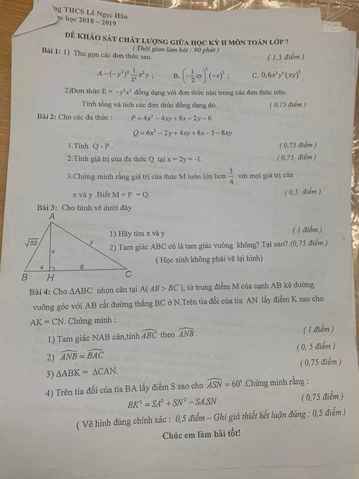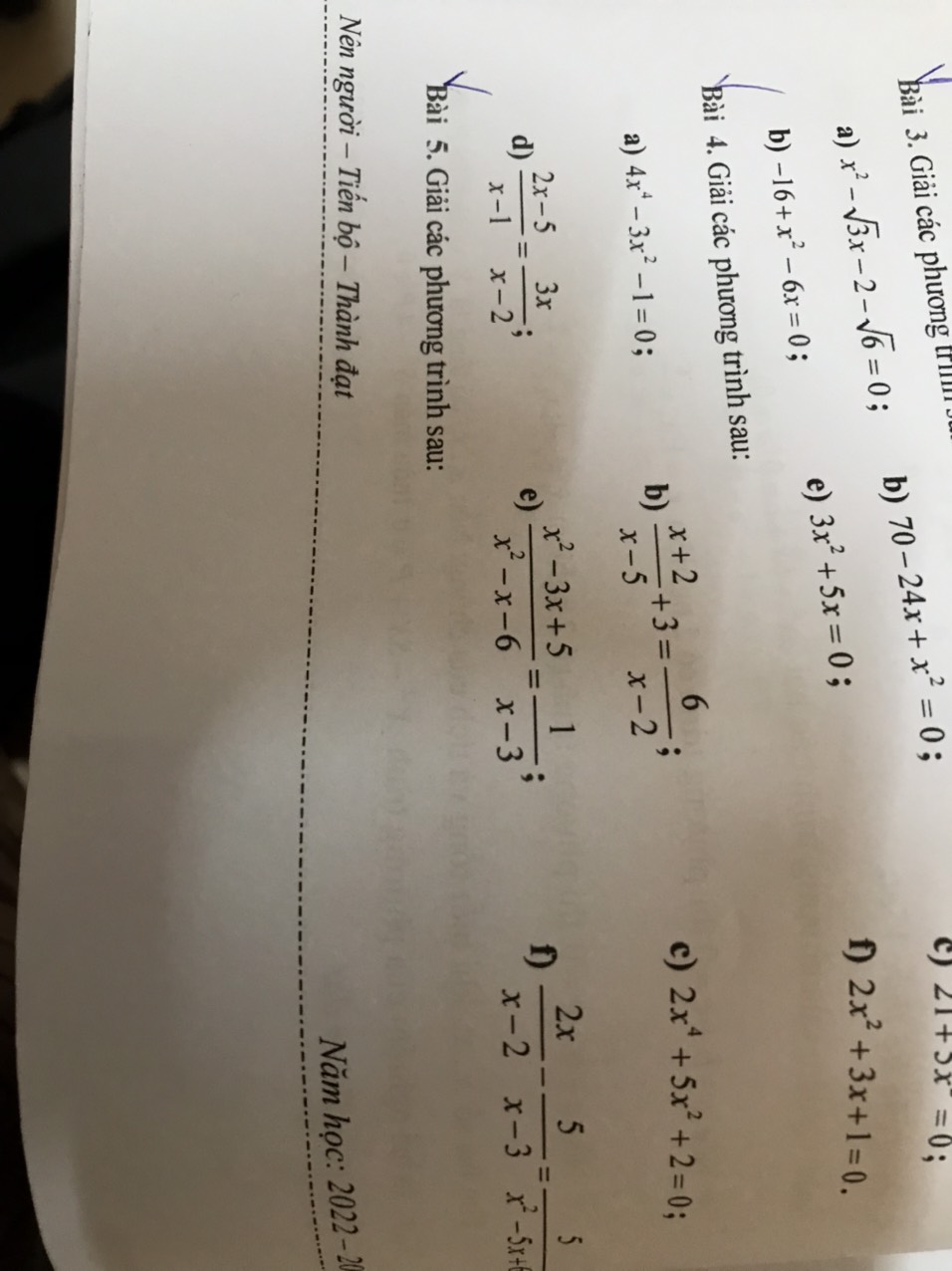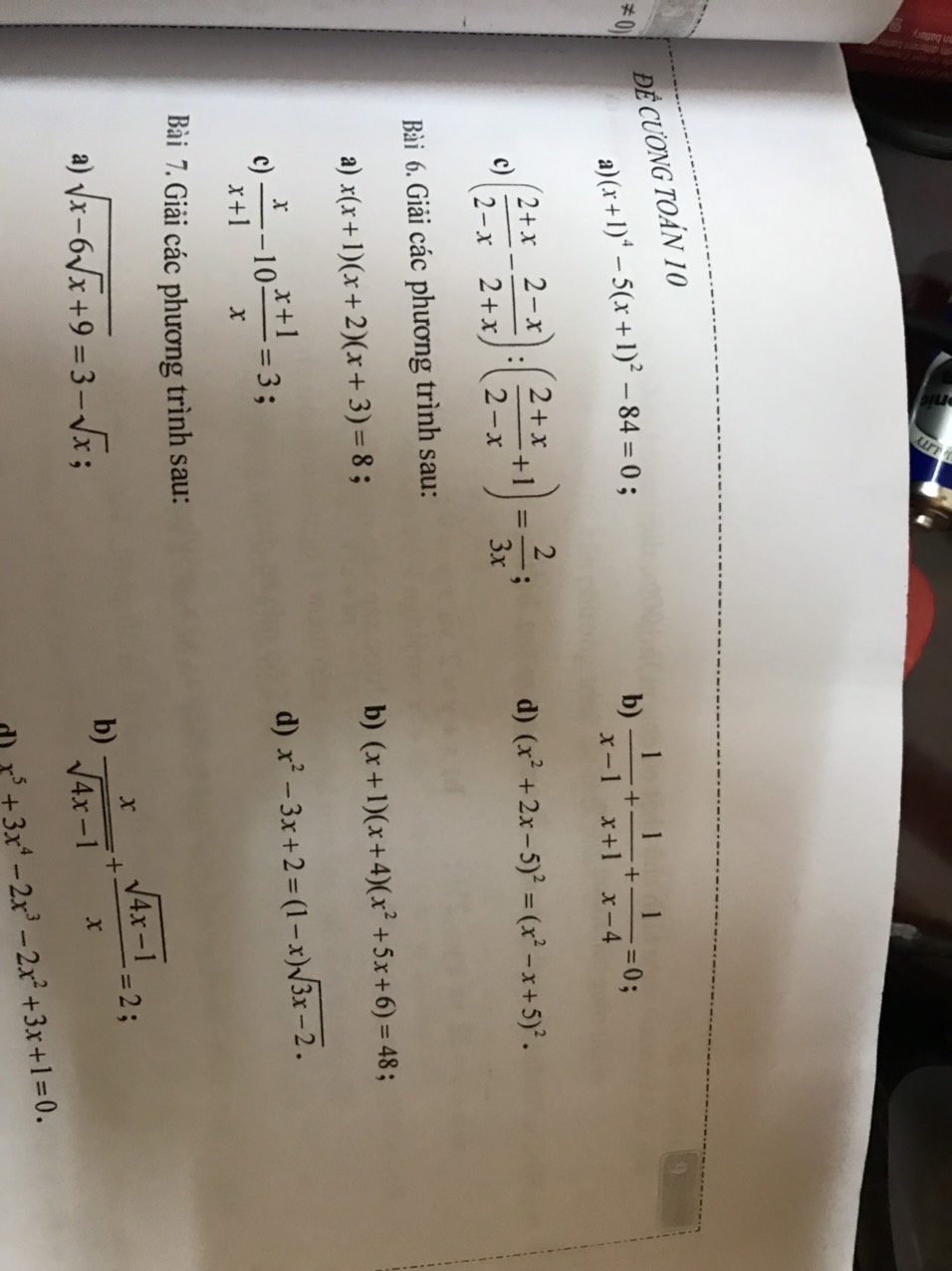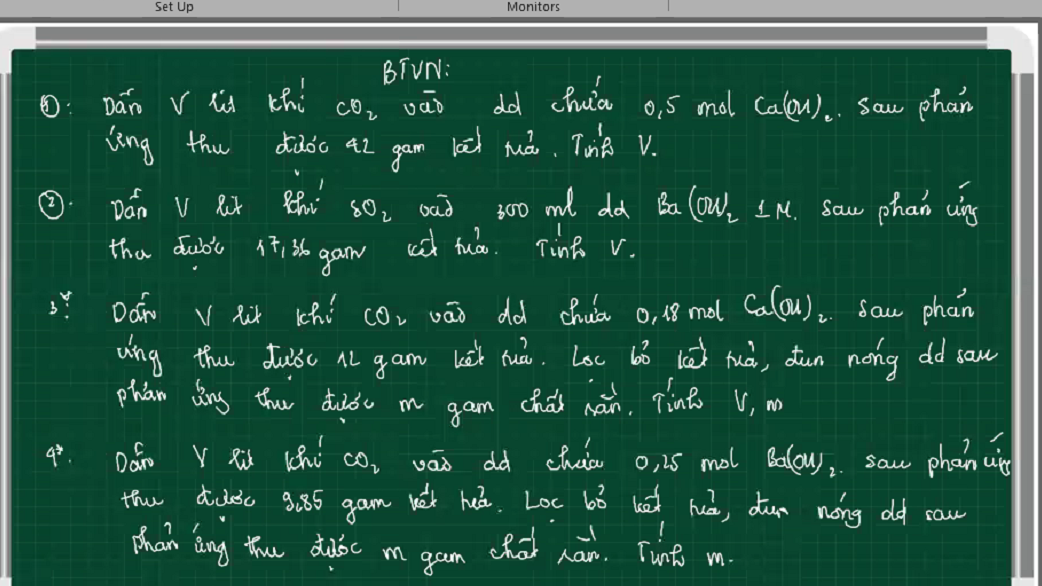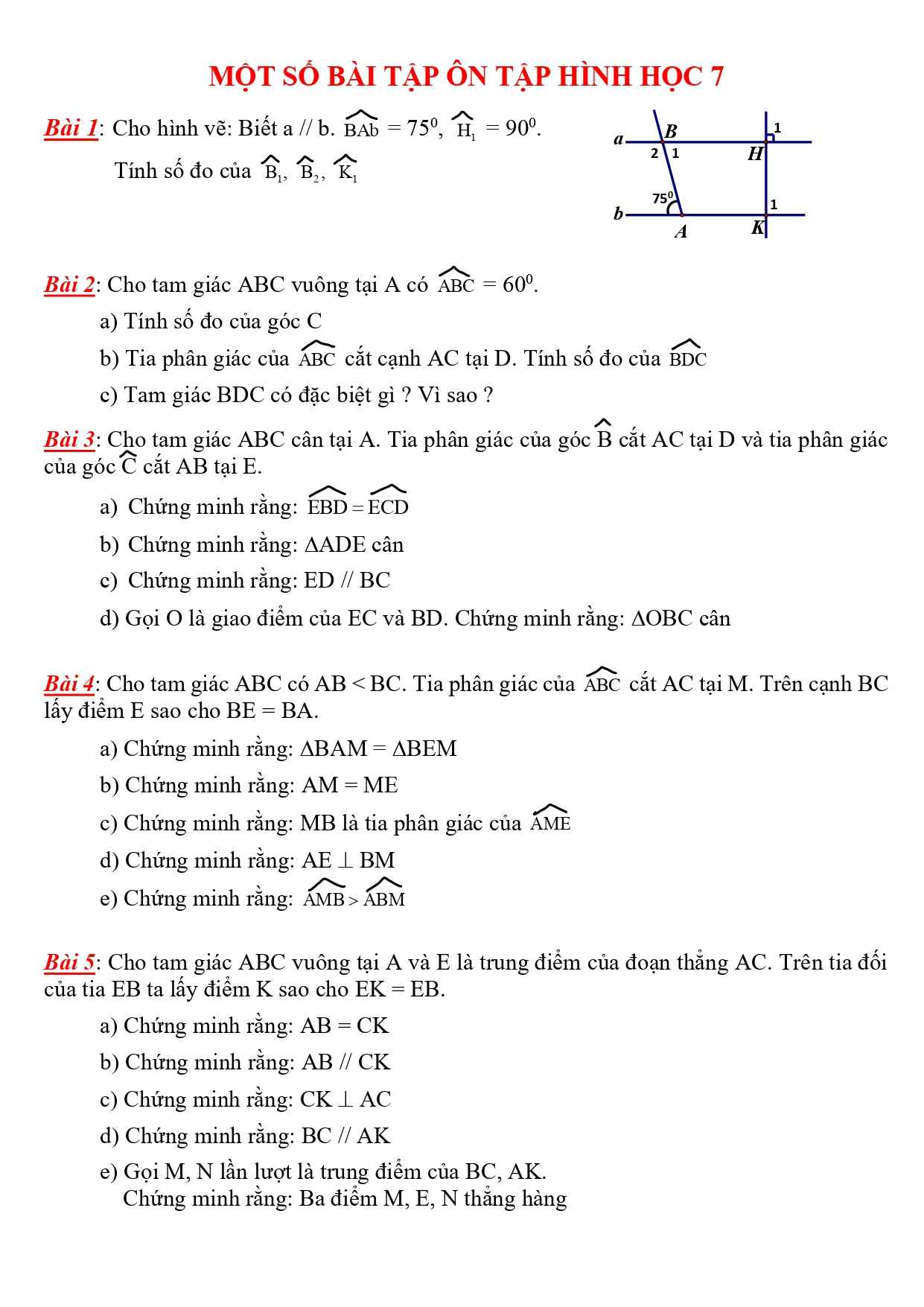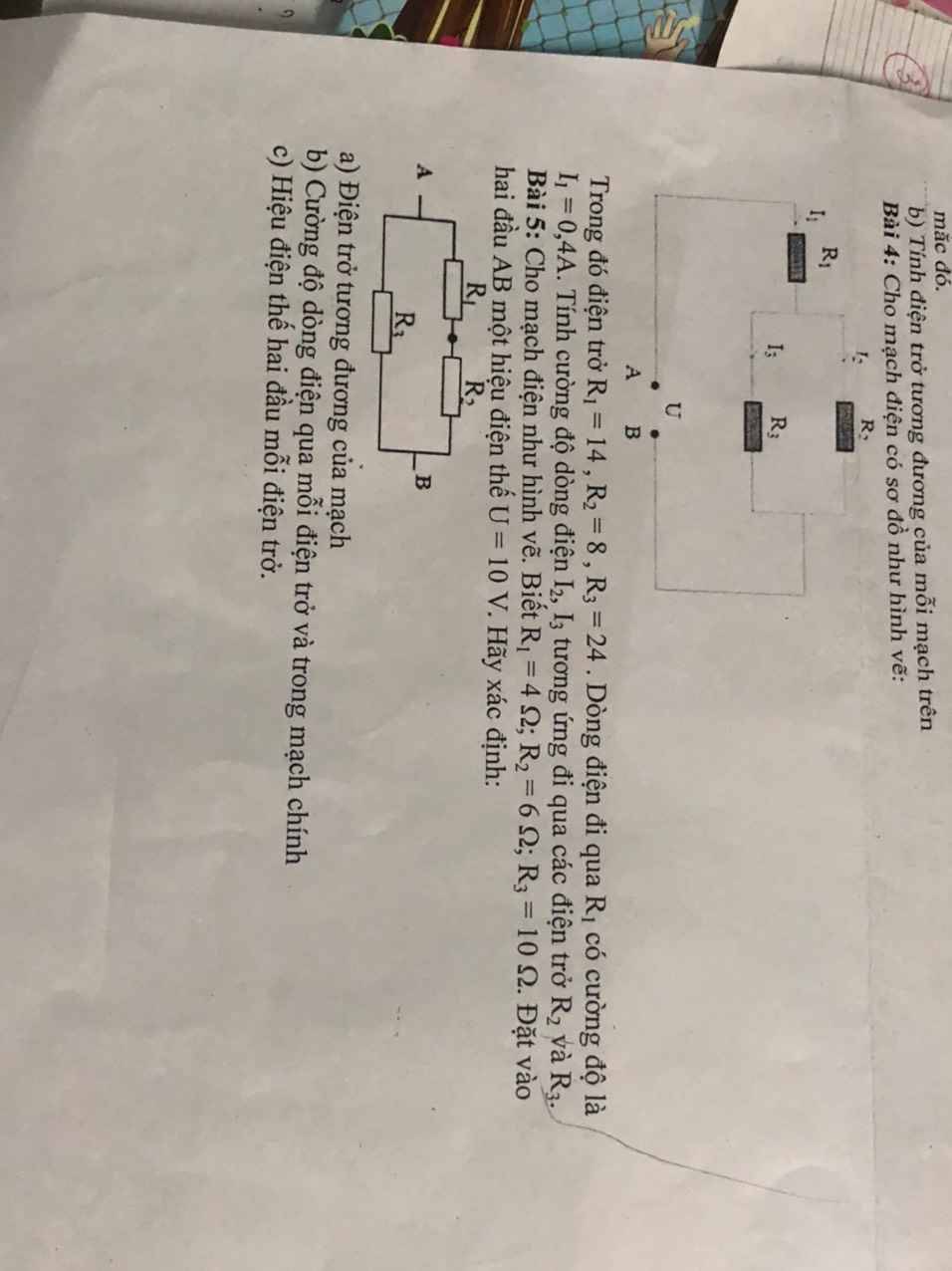 Bài 4 Giúp mình với
Bài 4 Giúp mình với
Hãy nhập câu hỏi của bạn vào đây, nếu là tài khoản VIP, bạn sẽ được ưu tiên trả lời.


D B
fast
happy
sure
carefully
badly
because of
because
because of
because
because of
I'm sorry that I came late
They were disappointed that he didn't keep the secret
I'm happy that i passed the exam
We are glad that you come
he is worried that he will be punished
study
reads
will phone
make
ask

1,Áp dụng định lý Pi-ta-go vào tam giác vuông AHB ta có:
\(AH^2+BH^2+AB^2\\
\Rightarrow x^2+4^2=\sqrt{52^2}\\
\Rightarrow x^2+16=52\\
\Rightarrow x^2=36\\
\Rightarrow x=6\left(vì.x>0\right)\)
Áp dụng định lý Pi-ta-go vào tam giác vuông AHC ta có:
\(AH^2+HC^2=AC^2\\ \Rightarrow6^2+9^2=y^2\\ \Rightarrow36+81=y^2\\ \Rightarrow117=y^2\\ \Rightarrow y=\sqrt{117}\left(vì.y>0\right)\)
2,Ta có BC=BH+HC=4+9=13
Ta có:\(AB^2+AC^2=\sqrt{52^2}+\sqrt{117^2}=52+117=169\)
\(BC^2=13^2=169\)
\(\Rightarrow AB^2+AC^2=BC^2\)
\(\Rightarrow\Delta ABC\) vuông tại A (định lý Pt-ta-go đảo)
a. Áp dụng định lý pitago vào tam giác vuông ABH
\(AB^2=AH^2+BH^2\)
\(\Rightarrow x=\sqrt{AB^2-BH^2}=\sqrt{\sqrt{52^2}-4^2}=\sqrt{52-16}=\sqrt{36}=6cm\)
Áp dụng định lý pitago vào tam giác vuông ACH
\(AC^2=AH^2+HC^2\)
\(\Rightarrow y=\sqrt{6^2+9^2}=\sqrt{117}=3\sqrt{13}\)
b. ta có: BC = 13 cm
AB = \(\sqrt{52}cm\)
\(AC=\sqrt{117}cm\)
Ta có: \(BC^2=AB^2+AC^2\)
\(13^2=\sqrt{52^2}+\sqrt{117^2}\)
\(169=169\) ( đúng )
Vậy tam giác ABC là tam giác vuông ( pitago đảo ) và vuông tại A

\(3,\\ a,ĐK:x\ge-5\\ PT\Leftrightarrow2\sqrt{x+5}-2\sqrt{x+5}+3\sqrt{x+5}=12\\ \Leftrightarrow\sqrt{x+5}=4\Leftrightarrow x+5=16\Leftrightarrow x=11\left(tm\right)\\ b,ĐK:x\in R\\ PT\Leftrightarrow\left|x-5\right|=6\Leftrightarrow\left[{}\begin{matrix}x-5=6\\5-x=6\end{matrix}\right.\Leftrightarrow\left[{}\begin{matrix}x=11\\x=-1\end{matrix}\right.\)

4:
a: =>4x^4-4x^2+x^2-1=0
=>(x^2-1)(4x^2+1)=0
=>x^2-1=0
=>x=1 hoặc x=-1
b: ĐKXĐ: x<>5; x<>2
PT =>\(\dfrac{x-2}{x-5}+3=\dfrac{6}{x-2}\)
=>\(x^2-4x+4+3\left(x^2-7x+10\right)=6x-30\)
=>4x^2-25x+34-6x+30=0
=>4x^2-31x+64=0
=>\(x\in\varnothing\)
c: =>x^2(2x^2+5)+2=0
=>x^2(2x^2+5)=-2(vôlý)
d: =>(2x-5)(x-2)=3x(x-1)
=>3x^2-3x=2x^2-4x-5x+10
=>x^2+6x-10=0
=>\(x=-3\pm\sqrt{19}\)
e: ĐKXĐ: x<>3; x<>-2
PT =>x^2-3x+5=x+2
=>x^2-4x+3=0
=>(x-3)(x-1)=0
=>x=1(nhận) hoặc x=3(loại)
f: ĐKXĐ: x<>2; x<>3
PT =>2x(x-3)-5(x-2)=5
=>2x^2-6x-5x+10-5=0
=>2x^2-11x+5=0
=>2x^2-10x-x+5=0
=>(x-5)(2x-1)=0
=>x=1/2 hoặc x=5


Bài 2 :
$n_{Ba(OH)_2} = 0,3(mol) ; n_{BaSO_3} = 0,08(mol)$
TH1 : $Ba(OH)_2$ dư
$Ba(OH)_2 + SO_2 \to BaSO_3 + H_2O$
$n_{SO_2} = n_{BaSO_3} = 0,08(mol)$
$V_{SO_2} = 0,08.22,4 = 1,792(lít)$
TH2 : có tạo muối axit
SO2 + Ba(OH)2 → BaSO3 + H2O
0,08......0,08..............0,08..............(mol)
2SO2 + Ba(OH)2 → Ba(HSO3)2
0,44........0,22......................................(mol)
$V_{SO_2} = (0,08 + 0,44).22,4 = 11,648(lít)$
Bài 4 :
$n_{BaCO_3} = 0,05(mol)$
CO2 + Ba(OH)2 → BaCO3 + H2O
0,05......0,05..............0,05..............(mol)
2CO2 + Ba(OH)2 → Ba(HCO3)2
..............0,2..................0,2....................(mol)
Ba(HCO3)2 \(\xrightarrow{t^o}\)BaCO3 + CO2 + H2O
0,2.....................0,2........................(mol)
m = 0,2.197 = 39,4 gam



